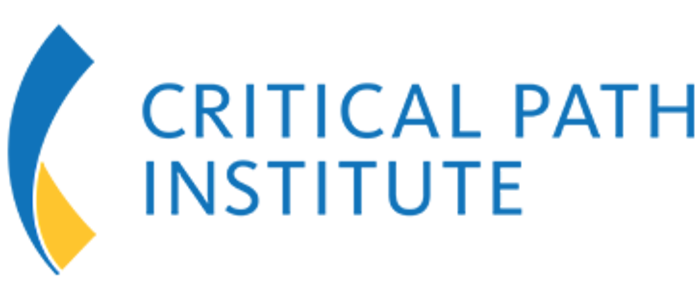A Massachusetts General Hospital (MGH) research team has identified a novel mechanism behind resistance to angiogenesis inhibitors – drugs that fight cancer by suppressing the formation of new blood vessels. In their report published in the Journal of Clinical Investigation, the team based in the Edwin L. Steele Laboratories for Tumor Biology in the MGH Department of Radiation Oncology describes finding in mouse models how anti-angiogenesis treatment induces a microenvironment that suppresses immune systems actions that would otherwise help to eliminate a tumor. They also developed a potential strategy for getting around this resistance mechanism.
"Deciphering and targeting mechanisms involved in resistance to anti-angiogenic therapy is critical to realizing the full potential of this promising cancer therapy," says Dai Fukumura, MD, PhD, deputy director of the Steele Labs, co-senior author of the paper. "Not only is this the first report investigating the role in anti-angiogenic cancer therapy of a subset of innate immune cells – Ly6Clow or non-classical monocytes – it is also the first to find an immunosuppressive function for these cells and to identify that as the key mechanism conferring resistance to anti-angiogenic therapy."
Angiogenesis inhibitors – often given in combination with traditional therapies – can improve treatment for several types of cancer, both by restricting the growth of new blood vessels and by "normalizing" the abnormal vessels in and around a tumor that can interfere with both chemotherapy and radiation therapy. But resistance to anti-angiogenic therapy limits the drugs' survival benefits. Several studies have suggested a role in the development of resistance for the immune system – particularly innate immune cells that suppress immune activity. But how specific subsets of these cells contribute to resistance has not been defined.
A series of experiments in mouse models of colorectal cancer first revealed that treatments blocking the vascular endothelial growth factor (VEGF) pathway – the target of approved anti-angiogenic drugs – induce the accumulation of monocytes and neutrophils. It soon became apparent that the buildup of non-classical monocytes – a subset previously identified as patrolling healthy blood vessels and possibly having an anti-tumor effect in lung cancer – was responsible for development of an immunosuppressive tumor microenvironment in colorectal cancer.
The research team identified the signaling pathway by which VEGF blockade induces expression of a molecule called CX3CL1 on tumor cells, attracting non-classical monocytes that carry the matching receptor. Those cells, in turn, attract neutrophils with another molecule called CXCL5; and both immune cells express factors that inhibit the proliferation of T cells, reducing the overall immune response to the tumor. Examination of biopsy samples taken from human patients before and after anti-angiogenic therapy revealed that expression of these chemokines – molecules that attract immune cells – increased in response to anti-VEGF treatment.
Since several methods of experimentally blocking the pathway improved the effects of anti-VEGF therapy in the mouse models, the team collaborated with Massachusetts Institute of Technology investigators to develop a potential gene therapy approach. Utilizing nanoparticle-delivered RNA interference against the interaction between CX3CL1 and its receptor, the approach significantly reduced the infiltration of non-classical monocytes into treated tumors and increased the beneficial effects of anti-VEGF therapy in a mouse model.
"Targeting resistance mechanisms can improve the efficacy of anti-angiogenic therapy drugs and help fulfill their promise against cancer," says Fukumura, an associate professor of Radiation Oncology at Harvard Medical School (HMS). "Our study's unveiling of a novel resistance mechanism to anti-VEGF therapy and the molecular mechanism underlying that resistance offers a basis for the development of novel and efficient immunotherapeutic strategies to treat solid tumors."
Rakesh K. Jain, PhD, director of the Steele Labs and co-senior author of the Journal of Clinical Investigation report, adds, "Tumors also escape the immune system through immune checkpoint molecules like PD-1 and CTLA-4, which are the targets of recently approved drugs. But that strategy has been effective only in some tumor types and in only a fraction of patients. Therapeutic strategies based on our findings regarding the immunosuppressive action of non-classical monocytes may prove to have synergistic effect with those approved immune checkpoint inhibitors." Jain is the Cook Professor of Radiation Oncology (Tumor Biology) at HMS.
###
Keehoon Jung of the Steele Labs is lead author of the paper. Additional co-authors are Takahiro Heishi, Joao Incio, MD, Nuh Rahbari, Euiheon Chung, and Timothy Padera, PhD, Steele Labs; Omar Khan, PhD, Piotr Kowalski, PhD, Robert Langer, ScD, and Daniel Anderson, PhD, Massachusetts Institute of Technology; Jeffrey W. Clark, MD, MGH Cancer Center; Andrew D. Luster, MD, PhD, MGH Division of Rheumatology, Allergy and Immunology; Seok-Hyun Yun, PhD, MGH Wellman Center for Photomedicine; and Christopher Willett, MD, Duke University Medical Center. Support for the study includes National Cancer Institute grants P01-CA080124, R35-CA197743, R01-CA126642, R01-CA096915; National Institutes of Health grants DP2 OD008780 and R00 CA137167; and Department of Defense grant W81XWH-10-1-0016.
Massachusetts General Hospital, founded in 1811, is the original and largest teaching hospital of Harvard Medical School. The MGH Research Institute conducts the largest hospital-based research program in the nation, with an annual research budget of more than $800 million and major research centers in HIV/AIDS, cardiovascular research, cancer, computational and integrative biology, cutaneous biology, genomic medicine, medical imaging, neurodegenerative disorders, regenerative medicine, reproductive biology, systems biology, photomedicine and transplantation biology. The MGH topped the 2015 Nature Index list of health care organizations publishing in leading scientific journals and earned the prestigious 2015 Foster G. McGaw Prize for Excellence in Community Service. In August 2016 the MGH was once again named to the Honor Roll in the U.S. News & World Report list of "America's Best Hospitals."
Media Contact
Katie Marquedant
[email protected]
617-726-0337
@MassGeneralNews
http://www.mgh.harvard.edu
http://dx.doi.org/10.1172/JCI93182





